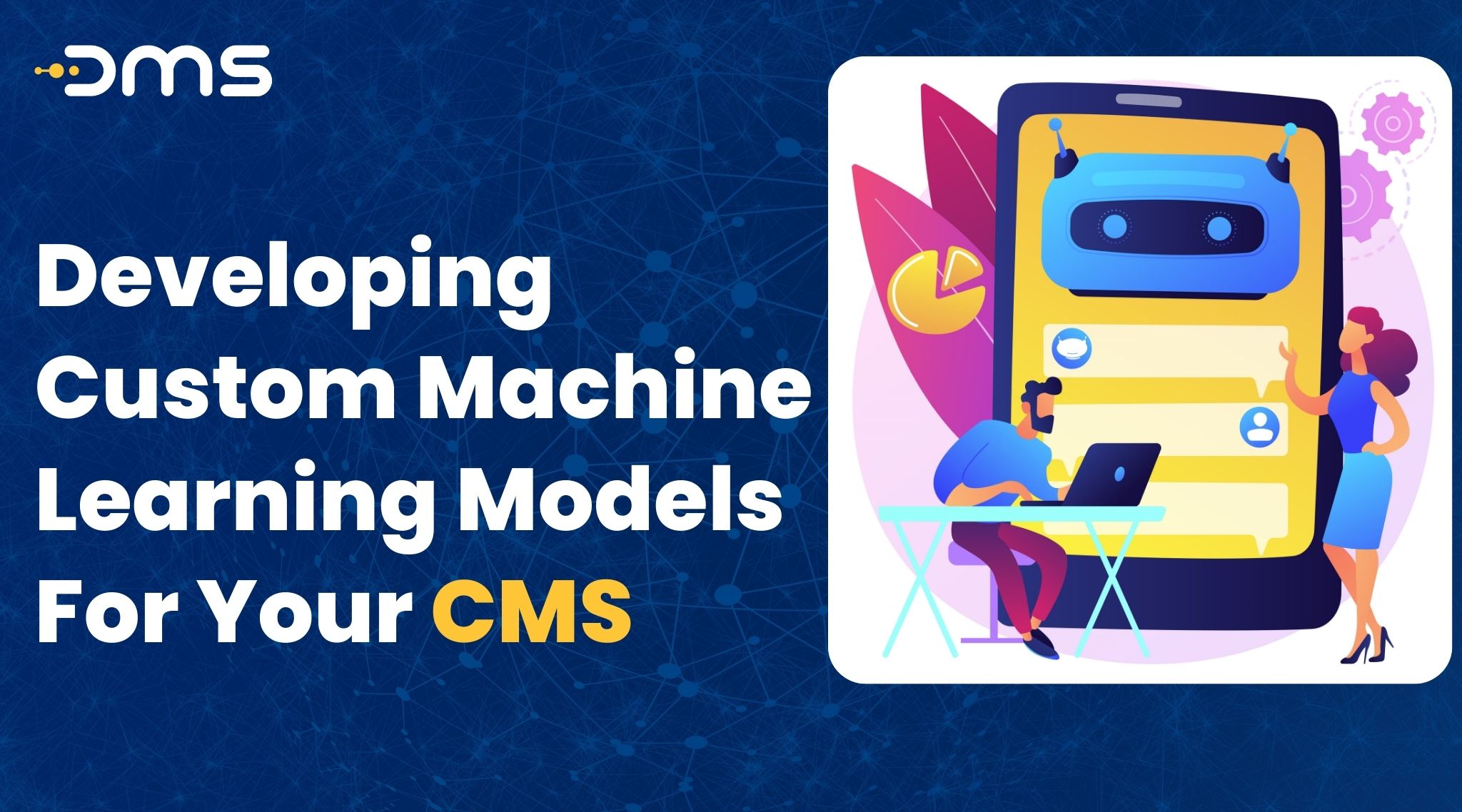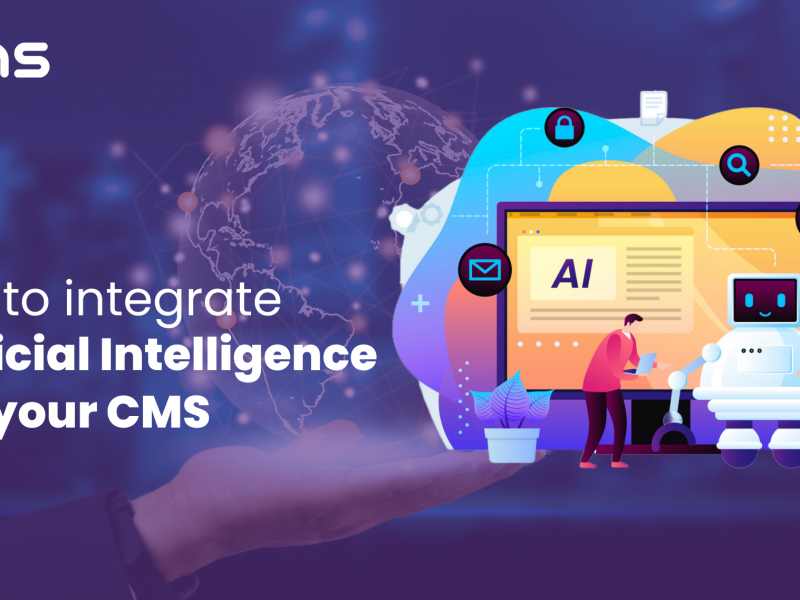Modern technology like machine learning can help companies streamline operations, cut costs, and enhance client satisfaction. Businesses can make use of their current information to get insights into their operations by developing distinctive custom machine-learning models. The benefits of developing customized machine-learning models for your CMS are covered in this article, along with an illustrated tutorial on how to get started.
Introduction
A branch of artificial intelligence called “machine learning” is concerned with developing algorithms that may extract information from and predict information. Custom machine learning models are specifically designed for a business’s unique needs and can help automate and optimize operations. Businesses can generate, manage, and publish digital material using a CMS, or content management system, that’s technology. By integrating machine learning with a CMS, businesses can gain insights into customer behaviour, optimize content delivery, and improve customer experiences.
What are custom machine learning models?
Custom machine learning models are designed to solve a specific business problem. They are built using algorithms that learn from a business’s unique data and provide insights that are tailored to their specific needs. It has become possible to use personalised machine learning models to automate processes, predict results, and enhance processes.
Why develop custom machine learning models for your CMS?
Developing custom machine learning models for your CMS can provide several benefits, including:
Improved customer experiences: Machine learning can help businesses personalize content, optimize product recommendations, and provide targeted advertising, all of which can improve customer experiences.
Increased efficiency: Custom machine learning models can automate repetitive tasks, reducing the time and resources required to complete them.
Better decision-making: Machine learning may give organizations knowledge of customer behaviour and operational processes that can help them make better decisions and run their operations more efficiently.
Competitive advantage: By enabling them to use their distinctive data to glean insights that their rivals may not have, custom machine learning algorithms can give firms a competitive advantage.
Choosing a machine learning platform
There are several machine learning platforms available, including Google Cloud AI Platform, Amazon SageMaker, and Microsoft Azure Machine Learning. Businesses should take into consideration factors like cost, usability, and interoperability with their current systems when selecting a platform for their business.
Essential Steps Involved in Developing Custom Machine Learning Models
Developing custom machine learning models requires a systematic approach and several essential steps to ensure successful implementation. These steps involve preparing data, defining the problem and selecting algorithms, training the model, Evaluating model performance, Improving model performance, Testing your model, Deploying your model, and monitoring and updating your model. Let us discuss all these in greater detail.
Preparing your data
Before developing a custom machine learning model, businesses must first prepare their data. This involves identifying and cleaning relevant data, ensuring that it is in a format that can be used by machine learning algorithms.
Defining the problem and selecting algorithms
The next step is defining the business problems the custom machine learning model will solve. Once the problem has been defined, businesses must select the appropriate algorithms to use.
Training your model
Once the problem has been defined and the algorithms have been selected, businesses must train their machine-learning models. This involves feeding the model with labelled data and allowing it to learn from that data. The model’s predictions will be increasingly accurate the more data it has access to.
Evaluating model performance
The model must be assessed in order to determine how it performs after training. Businesses should consider metrics such as accuracy, precision, and recall when evaluating their model’s performance.
Improving model performance
If the performance of the model is inadequate, firms might take action to make improvements. This may involve tweaking the model’s parameters or selecting different algorithms.
Testing your model
The model must be verified to make sure it works as expected before being used. To make sure that their models are accurate and trustworthy, businesses should test them on an appropriate portion of data.
Deploying your model
The model can be launched into production after it goes through testing. Businesses must ensure that their infrastructure can support the model and that it is integrated with their CMS.
Monitoring and updating your model
The model must be checked to make sure it continues to operate as predicted once it has been implemented. Businesses should also consider updating their model periodically to ensure that it remains relevant and accurate.
Examples of custom machine learning models for CMS
Custom machine learning models can be used in a variety of ways within a CMS. Some examples include
Personalisation: Based on user behaviour and preferences, machine learning can be used to customise content and product recommendations.
Predictive analytics: Machine learning techniques can be utilised to foresee user behaviour and spot patterns that might help guide judgement calls.
Fraud detection: Machine learning can be used to detect and prevent fraud by analyzing user behaviour and identifying anomalies.
Chatbots: Machine learning can be used to develop chatbots that can provide personalized customer support.
Challenges and Risks of developing custom machine learning models
While custom machine learning models can provide significant benefits, they also come with challenges and risks. These include
Data quality: The data that artificial intelligence or machine learning models are trained on determines how accurate they’re going to become. The forecasts made by the model will be off if the data has poor quality.
Overfitting: Overfitting occurs when a model is trained on too little data, resulting in it becoming too specialized and unable to generalize to new data.
Bias: Machine learning models can be biased if they are trained on data not representative of the entire population.
Privacy concerns: Machine learning models can potentially expose sensitive user data, raising privacy concerns.
Conclusion
Developing custom machine learning models for your CMS can have a big impact on how customers are served, how efficiently decisions are made, and how you can gain a competitive edge. Businesses can get started with creating their own unique machine-learning models by following the procedures mentioned in this article and utilizing their current data to acquire insights that are particular to their operations.

